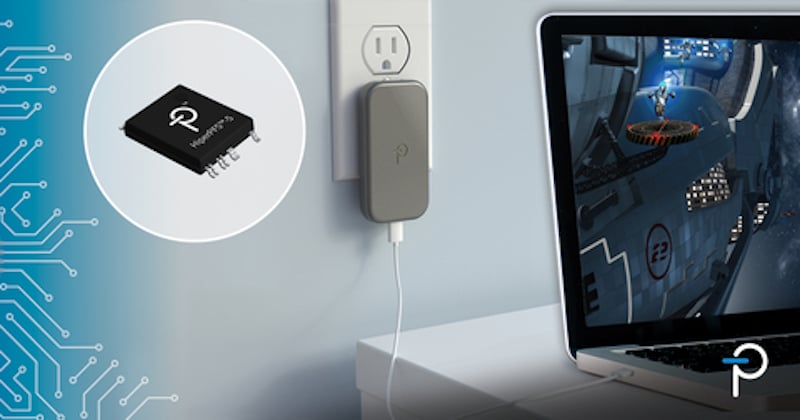Power Component Innovations Enrich Supply Designs
Power supply design is a challenging task. Feeding those needs, a handful of power component companies recently rolled out devices that aim to boost the performance and efficiency of power supplies.
Engineers have to be aware of several design specifications when dealing with power supplies. Designers have to consider the following: appropriate regulators, thermal management, grounding, capacitance, frequency response, power integrity, power efficiency, and inrush current all while maintaining minimal external components. The final product, power supply should have sufficient product life, manage internal, and external temperatures well, as well as input voltage.
With the tech world booming, electrical engineers have to be provided with a number of next-generation power supplies that can handle each demanding market. Recently, a few key developers such as ROHM, Power Integrations, and Toshiba are presenting their devices that aim to boost the performance and efficiency of power supplies.
QuiCur Technology Boosts Response Performance
Even as electronic devices aim for smaller footprints, the number of components required for each dedicated power supply continues to grow. Addressing that issue, ROHM Semiconductor has developed a new technology called QuiCur that can maximize the response performance of power supply ICs. ROHM says this technology can improve load transient response characteristics of DC/DC converter ICs and LDOs.
Power supplies rely on efficient, fast response performance to enable voltage stability at subsequent stages of DC/DC conversion, such as switching regulators and linear regulators. To help engineers tackle the reduction of external components, ROHM’s QuiCur allows designers to reduce the amount of capacitors required in power supplies. This also reduces the design load for the entire power supply.

ROHM’s QuiCur offers more footprint per PCB and can still achieve strong response with low output capacitance during DC/DC conversions. Image used courtesy of ROHM Semiconductor
QuiCur brings IC stability and allows the power supply to achieve ideal load transient responses without affecting feedback circuits, says the company. ROHM recommends combining their QuiCur technology with Nano Cap, a stabilizing linear control that allows any output capacitance from QuiCur to be reduced by 1/10th in comparison to conventional solutions. The ROHM QuiCur-Nano Cap combo is expected to extend stability when extreme response performances arrive.
HiperPFS-5 IC PFC IC Integrates GaN Switch
The capacitors and inductors found in power supplies can cause power loss due to the phase change between current and voltage. In late March, Power Integrations introduced its latest line of power-factor-correction (PFC) ICs, the HiperPFS-5 family. This PFC IC target ultra-fast adapters, consumer electronics, and appliance power supplies, says the company.
The high efficiency quasi-resonant PFC IC is equipped with an integrated 750 V gallium nitride (GaN) (PowiGaN) switch. The HiperPFS-5 family with PowiGaN switch is able to bring an efficiency of nearly 98.3% while delivering 240 W of power without an external heat sink, says Power Integrations.

HiperPFS-5 enables high power factor correction in 240 W power adaptor applications with a power factor of 0.98, nearly ideal conditions. Image used courtesy of Power Integrations
At the circuit-level, the HiperPFS-5 leverages the inductance and capacitance of the device's quasi-resonant (QR) discontinuous conduction mode (DCM). This design removes the need for external LC configurations to control and adjust the switching frequency across the output load, input line voltage, and the input line cycle. According to the company, QR DCM provides low switching losses and permits the use of boost diodes, allowing the flexibility to design smaller footprints.
What's the benefit of internal DCM? Well, a drawback in standard DCMs is the potential high-peak currents that take away from the output power and deliver unwanted noise. Dealing with that noise requires large, external input filters. A couple of unique features for the HiperPFS-5 are it 750 V PowiGaN switch and its CAPZero function.
The PowiGaN switch allows for the DCM to maintain a PFC of 0.98 up to 305 VAC and continuously operate at 460 VAC. At this range, you avoid standard high-current peaks and unwanted disturbances are filtered before reaching the output. PowiGaN provides the potential replacement for traditional silicon transistors on the primary side of high voltage ICs.
The second key feature of the HiperPFS-5 is its automatic X-capacitor discharge, CAPZero function. Once AC voltage is applied, CAPZero is able to block current flow in the X capacitor safety discharge resistors and reduce the power loss to a negligible wattage of 5 mW.
DTMOSVI MOSFETs Boost Power Supply Efficiency
Toshiba Electronic Devices & Storage Corporation (Toshiba) has added four new products to their DTMOSVI series with the TK090E65Z, TK110E65Z, TK155E65Z, and TK190E65Z. Each rated for 650 V applications and boast a unique super junction structure N-channel MOSFET technology. Toshiba says its targeting the devices for industrial equipment in data centers and for photovoltaic (PV) generators.
Toshiba's DTMOS series is able to reduce the resistance during high voltage applications. The company's fifth generation DTMOS series decreases the drain-to-source on-resistance and gate-to-drain charge in order to reach low on-resistance with high-speed switching. Decreasing the product of each element is a figure of merit that directly lowers the conduction loss and switching loss in the MOSFET.

New members of the DTMOSVI series—the TK090E65Z, TK110E65Z, TK155E65Z, and TK190E65Z—are 650 V super junction structure N-channel MOSFETs. Image courtesy of Toshiba Authorized Distributor Avnet
The DTMOSVI series offers a 40% reduction in gate-drain charge compared to Toshiba’s previous IV series, which was already 30% lower than competing switching devices, according to Toshiba. Using Toshiba’s MOSFETs in PFC evaluation boards, the company's engineers they were able to provide an output of 2.5 kW, which improved the efficiency of the power supply.
All products for the DTMOSVI series offer sufficient input capacitance to reduce impedance before it reaches the power supply regulator. The internal regulator will offer better control and stability during the conversion process.
Time to Focus on Power Supply Solutions
Battery designs have been at center stage these days when it comes to the latest research in power electronics. But there should be more mindshare focused on power supply solutions. The great news is that these solutions from Toshiba, Power Integrations, and ROHM are refreshing for electrical engineers and designers because they add design flexibility. Continued research can be built on the momentum of these key developments. Each of these products is minimizing external components, maintaining stability during peak conditions, and improving efficiency and performance for any power supply.







